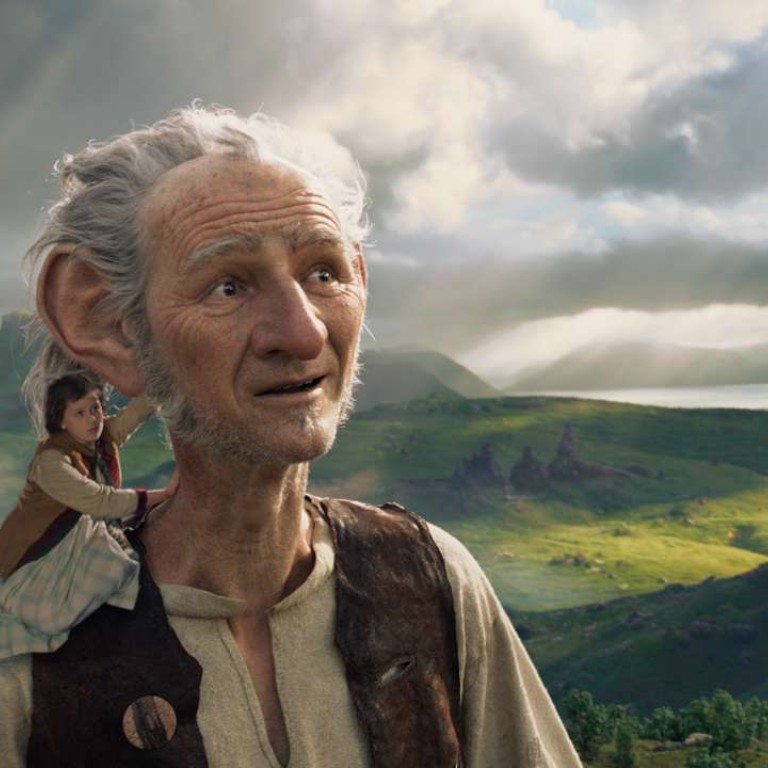
Steven Spielberg finds joy and sadness in Roald Dahl adaptation The BFG
Director sings praises of British actor Mark Rylance, who he’s long wanted to work with, and newcomer Ruby Barnhill, but says screenwriter’s death sent him to a lonely place
“I’m thinking of ear enhancement,” announces Mark Rylance, the star of Steven Spielberg’s new film, The BFG. “It might be an improvement in my acting. I mean, what’s the difference between [this and] breast or buttocks enhancement? Why are we not getting big ears?”
He is – hopefully – joking. The acclaimed 56-year-old British actor, today sporting a beige fedora when we meet in the Carlton Hotel in Cannes, has perfectly acceptable ears as it is. But playing the Big Friendly Giant in Spielberg’s take on Roald Dahl’s 1982 children’s book has evidently turned his head. Or ears.
While the film is live-action, Rylance’s BFG has been conjured digitally via motion-capture technology. He spent weeks in a suit covered in sensors, capturing his every movement and facial tic. But waggling the giant’s oversized ears? Now that was beyond even the skills of this triple-Tony-winner.
“It’d be quite mechanically difficult to get ears that were expressive,” he ponders. “We have eyebrows and we can do different things with our faces, but generally our ears…they get red, don’t they?”
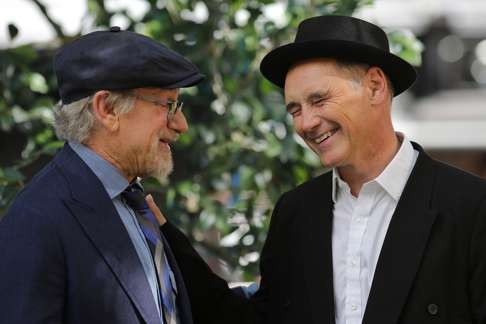
If the director casually ignored Blake’s work, he embraced the words of Dahl, with the help of his screenwriter, the late Melissa Mathison, with whom he’d previously worked on E.T. the Extra-Terrestrial.
Released the same year as The BFG was published, that classic tale of a lonely child and his alien visitor almost feels woven from the same thread as Dahl’s book – in which youngster Sophie is stolen away from her orphanage by an equally isolated creature she later nicknames the Big Friendly Giant.
“Loneliness is a place that is familiar to me,” admits the 69-year-old Spielberg, immediately recognisable in blazer and beard. “I was that way when I was younger before having children, before getting married. But I remember like it was yesterday what it felt like to really feel isolated and alone. And I felt that way about the BFG and it was very easy to tell his story because I came from the same place he came from. I didn’t have the feistiness [or] the tenacity of the character of Sophie, who was able to tell off a 25-foot tall humanoid giant!”
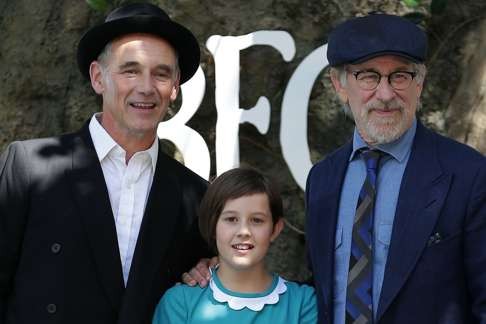
“I never knew the Dahl family,” the director says. “I never met Roald Dahl. I didn’t know anything about Roald or his family. I only knew about his work. That’s all I knew.”
It meant that Spielberg didn’t have “an image in mind” for the character of Sophie, who was named by Dahl after his granddaughter, the cookbook writer and former model Sophie Dahl. Then he met Cheshire-born newcomer Ruby Barnhill after her first audition wowed him.
“She was so honest,” he says. “I felt like it wasn’t Dahl writing, it was Ruby making up the words. That was how realistic she sounded.”
Spielberg immediately flew the now 12-year-old Barnhill to Berlin, where he was making 2015’s Cold War thriller Bridge of Spies. “I take chances on young people because I have a hunch they are right for the part,” he says.
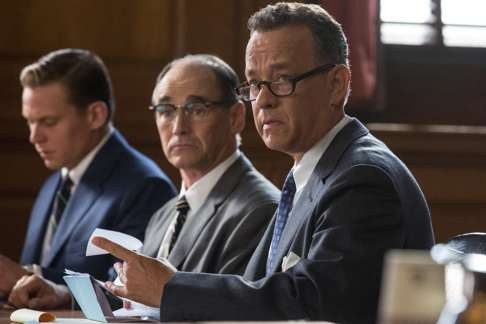
The Rylance-Spielberg collaboration feels as perfect as the director’s long-standing relationship with Tom Hanks. Already this year, Rylance claimed the best supporting actor Oscar for Bridge of Spies’ Soviet intelligence officer Rudolf Abel.
“It was the most understated performance of any actor in any of my movies of my career,” says Spielberg, who has already lined Rylance up for his next two projects, virtual reality tale Ready Player One and The Kidnapping of Edgardo Mortara. Spielberg, who saw Rylance back out of a role for his 1987 biopic Empire of the Sun, has been desperate to work with him for years, since watching him in productions of Jerusalem and Twelfth Night.
I think Mark is a figment of nature’s imagination – which means he can change and become anybody
“He’s a very gentle soul,” he says. “I’ve never seen anybody perform like him. He and Daniel Day-Lewis are in a very similar rarefied category. I think Mark is a figment of nature’s imagination – which means he can change and become anybody, just with a gust of new air through his body, a new inspiration, a character. He could just transform into anything or anyone.”
Prone to standing up to illustrate his points, Rylance is just as animated in person as he is on screen. The mo-cap technology didn’t faze him at all.
“It made the set more like a theatre rehearsal room,” he says. “In a good theatre rehearsal room you’re not concerned with the audience; you just have a set, and sometimes you don’t have props. You just have imaginary things. You’re just concerned with the dynamics of what’s happening between the characters. And this was the same: there was no camera and there was no set.”
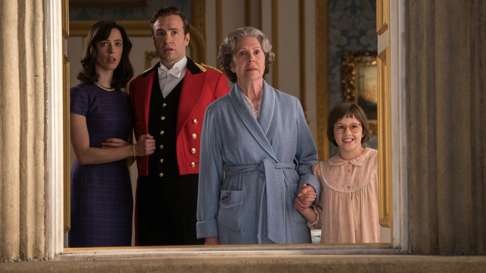
“I hope it provides the Brits with a good humoured laugh,” says Spielberg. “It was all done with a tremendous sense of humour and a tremendous sense of respect for the Queen.”
For all the brazen humour, Spielberg admits The BFG “is touched with a lot of sadness” after his screenwriter died in November 2015 of cancer, aged 65, before the film was finished. “The saddest I’ve been was when I saw the film for the first time,” he admits. “I just sat on the mixing stage and I just ran it for myself. I haven’t had a chance to mourn Melissa because she’s accompanied me after her death throughout the entire process.”
Just as Dahl’s Sophie understands, losing people is part of everyday life.
The BFG opens on August 11
Want more articles like this? Follow SCMP Film on Facebook

 (1).JPG?itok=0BHk6odg&v=1665981271)